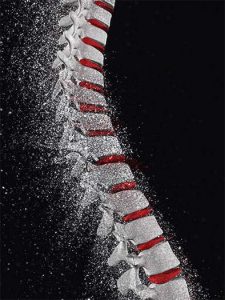Worldwide, one in three women and one in five men aged 50 years and over will suffer an osteoporotic fracture.
Osteoporosis causes bones to become weak and fragile so that they break easily – even as a result of a minor fall, a bump, a sneeze, or a sudden movement. Is it true that osteoporosis only occurs at people who aged and especially postmenopausal women? Let’s debunked some common myths relating to osteoporosis.
Myth: Everyone gets osteoporosis as they age
Not exactly true. According to the American Academy of Orthopaedic Surgeons, bone mass peaks around the age of 25 or 30 and starts to drop at the age of 40. As you age, bone calcium and other minerals decrease – it’s a natural process of ageing. But, starting a healthy and balanced diet in early age can help reduce osteoporosis risk.
Bones look like a honeycomb, where holes grow as bone starts to lose. If you lack the essential nutrient, it can speed up the risk. In order to keep the bone healthy and strong, consume plenty of calcium and vitamin D, couple with weight-bearing exercises and avoid excessive alcohol and smoking.
Myth: Only women get osteoporosis
Although it is true that women are at greater risk, especially postmenopausal women – men are at risk of developing osteoporosis too. Women are easy target usually because of lack of estrogen when menopause begins. For men, this medical condition appears later in life for them. After age 50, up to one in four men will have an osteoporosis-related bone fracture.
Myth: Osteoporosis is not that serious
Yes, a broken bone can heal, but osteoporosis is not just a matter of broken bone – it is a serious condition. Many seniors are hospitalised annually as a result of a hip fracture. Hip fractures among the elderly have a high mortality rate.
Myth: I’m too young to worry about osteoporosis
You’re never too young to build more bone and preserve it for later. The myth about not needing to worry about bone health until you’re older is because there are medications available to help treat it. Not many know that daily calcium and vitamin D are needed to help build new bone when old bone is broken down. The process of new bone builds each day occurs during childhood. Thus, calcium and vitamin D are essential throughout the years.
Myth: I’m thin and healthy, so my bones are fine
Being thin can be good for many aspects of health, but, it can actually mean you are at a greater risk for osteoporosis – so does being underweight. Body mass index (BMI) less than 21 or having a low body weight in general increases your osteoporosis risk. If you’re naturally slender, focus on preventive strategies to keep your bone strong and healthy.

Myth: If I have osteoporosis, I would feel it
Osteoporosis is known as a “silent” condition. Thinning bones aren’t painful but obviously, you can feel the pain when the fracture happens. The first sign of osteoporosis is often a broken bone but other symptoms can be very subtle such as losing height or developing a slight curve to the spine.
Myth: Only a serious fall can break a bone
Generally, osteoporosis is a condition where your bones are thinning. When bones are thin, it doesn’t take much to break them. Fragility fractures can result from falls, heavy lifting, trauma, or even stepping and twisting the wrong way. A broken bone that comes from a minor trauma rather than a major fall could be a significant warning sign that you may have osteoporosis.
Myth: I’ve been diagnosed with osteoporosis; it’s too late to do something
False, you can still take steps to keep bones strong even after being diagnosed with osteoporosis. Make sure you get 1,000 to 1,200 milligrams of calcium daily and dairy products, fortified foods such as oatmeal and orange juice, canned fish with bones are the good supply of calcium for your bones. Besides, vitamin D is also vital to keep your bones strong. Get enough sun exposure and dietary supplements and also start a regular bone-building workout regimen: walk, lift weights or climb stairs.
Take Action For Change!
Your risk of developing osteoporosis is determined by a set of factors, which some can still be changed such as lifestyle, nutrition and smoking. In order to sustain healthy bones, you must exercise regularly, ensure a diet rich in bone-healthy nutrients, and avoid negative lifestyle habits such as excessive drinking and smoking. If you are at high risk, get tested and treated if needed. This is to ensure optimal protection against fracture.
References:
WebMD


